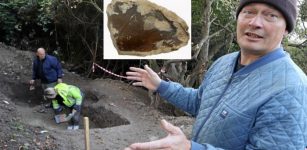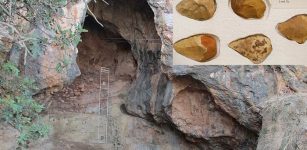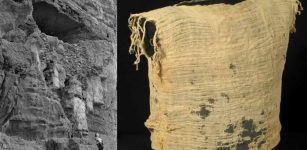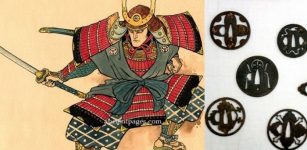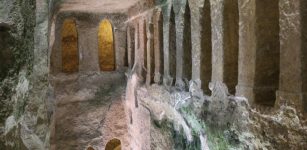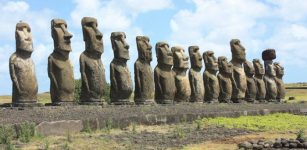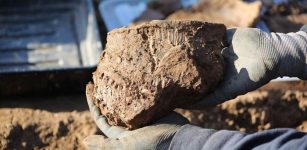Archaeologists Survey Bronze Age Konar Sandal Site In Southeast Iran
Conny Waters - AncientPages.com - A team of archaeologists and cultural heritage experts have started to dig trenches across Konar Sandal under the supervision of the Research Institute of Cultural Heritage and Tourism, Fereidoun Fa'ali, the provincial tourism chief, announced on Monday.
Previous archaeological investigations revealed that the site consists of two mounds a few kilometers apart, called Konar Sandal A and B with a height of 13 and 21 meters, respectively. At Konar Sandal B, a two-story, windowed citadel with a base of close to 13.5 hectares was found. Archaeologists also found tablets covered with scripts of unknown nature.
“The demarcation project is aimed to determine the legal boundaries of the prehistorical site, which is situated in Jiroft plain…. The globally-magnificent site of Konar Sandal was once one of the most important Bronze Age cities in Southwest Asia,” the official explained.
The first archaeological excavation on the site was conducted some two decades ago by a team of international experts under the leadership of Iranian archaeologist Yousef Majidzadeh, he said.
The survey resulted in the discovery of a Bronze Age settlement in Halil-Rud valley,” Fa’ali added.
The discovery of the magnificent Jiroft site came by accident in the very early 21st century when rounds of heavy flood along the Halil River swept the topsoil off thousands of previously unknown tombs and led to the discovery of many artifacts believed by archeologists to belong to the Early Bronze Age (late 3rd millennium BC).
The earliest reports revealed, “An old object was seen floating on the surface of the water.” Realizing it was precious, the following day, villagers impoverished by two years of drought, swarmed the river banks in search of 5,000-year-old antiquities.
Geological factors have led to it being overlooked for years by tourists and archeologists, who have generally been more interested in Mesopotamia some 1,000 km away.
Konar Sandal excavtions. source
In 2003, Iran invited Jean Perrot, the French archeologist who as the director of the French National Centre for Scientific Research (CNRS) had conducted excavations in Shush (or Susa, an ancient city of the Elamite empires in Khuzestan Province of Iran) area between 1969 and 1978.
Referring to the discovery of the Jiroft artifacts as an archeological revolution, Perrot stated: “An area we formerly regarded as resided only by nomads and their cattle, was the heart of an incredibly advanced civilization. In this area, people lived with a social hierarchy. These people had an explicit view of the world which distinguishes them from the Sumerians. Henceforth, we must consider Jiroft as the origin of civilizations and refer to all other civilizations as pre or post-Jiroft civilization.”
Finally, under the leadership of Dr. Yousef Majidzadeh, a team of international archaeologists began excavations in 2003. Simultaneously an awareness program was initiated for the locals to lecture to them about the historical significance of Jiroft and the irreplaceable artifacts.
Konar Sandal artifacts. source
Madjidzadeh and his team of experts uncovered more than two square kilometers of remains from a city dating back to at least the late 3rd millennium B.C. The data demonstrate that Jiroft’s heyday was from 2500 BC to 2200 BC. Astonishingly the chlorite vases found in Jiroft were not an unfamiliar object for the archeologists. Chlorite vessels similar to the stunning examples unearthed at Jiroft had been found from the Euphrates to the Indus, as far north as the Amu Darya and as far south as Tarut Island, on the Persian Gulf coast of Saudi Arabia.
Madjidzadeh, who is the author of a three-volume history of Mesopotamia and a leading Iranian authority on the third millennium BC, has long hypothesized that Jiroft is the legendary land of Aratta, a “lost” Bronze Age kingdom of renown. It’s a quest that he began as a doctoral candidate at the University of Chicago when in 1976 he published an article proposing that Aratta, which reputedly exported its magnificent crafts to Mesopotamia, was located somewhere in southeastern Iran.
According to Madjidzadeh, Jiroft artifacts are a “missing link” in understanding the Bronze Age because they help explain why so many incised chlorite vessels, all with remarkably similar imagery, have turned up at widely separated ancient sites, from Mari in Syria to Nippur and Ur in Mesopotamia, Soch in Uzbekistan and the Saudi Arabian island of Tarut, north of Bahrain.
“There must certainly have been a school of stone carvers because you see such an aesthetic unity of these objects throughout the kingdom. This high-level artistic quality did not suddenly appear from nowhere,” he maintains. “The traditions must have taken 300 to 400 years to develop,” commented Iranian archaeologist Yousef Majidzadeh, who led excavations in the region for more than two decades.
Jiroft artisans fashioned pieces with what seems strange and enigmatic iconography. Some were encrusted with lapis lazuli from Afghanistan, carnelian from the Indus Valley, turquoise, agate, and other semiprecious, imported stones.
“The artists had such a naturalistic way of rendering images,” Madjidzadeh explains, adding: “It is a style that was not seen anywhere else in that era.”
Jiroft is surrounded by mountains on three sides, rising some 4,000 meters high. Many Iranian and foreign experts see the findings in Jiroft as signs of civilization as great as Sumer and ancient Mesopotamia.
Written by Conny Waters - AncientPages.com Staff Writer





